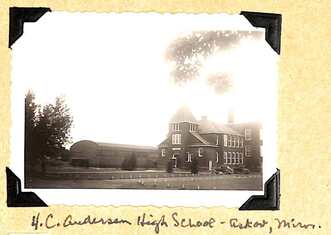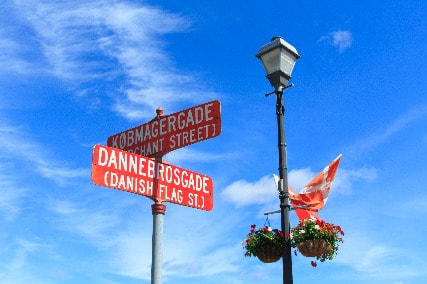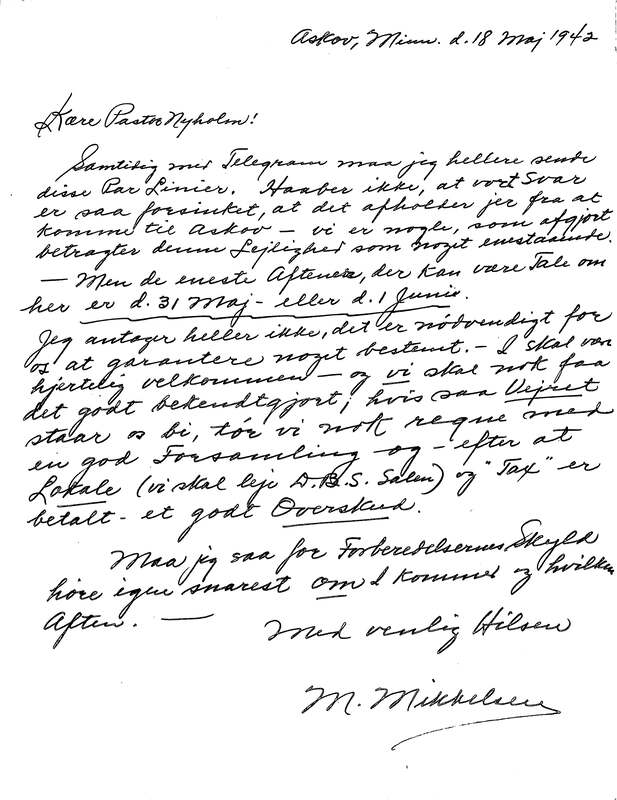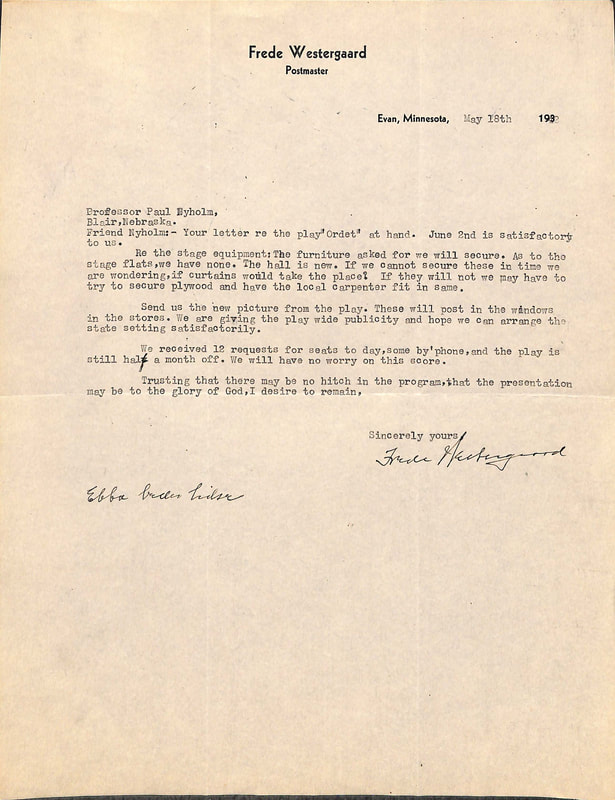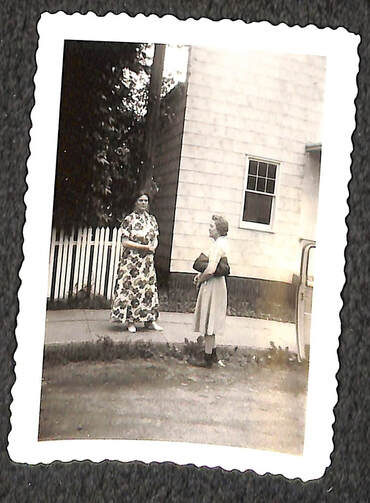askov, MinnesotaOn arriving in this northern Minnesota village, it was hard for players to believe they were still in the U.S.A. Neat village streets, homes, business houses, an old typically Danish church, the H. C. Andersen High School, all added to the foreign atmosphere of this delightful town. The birches, evergreens, neat park paths added an additional Danish flavor to the scene. The morning following the play in the DBS [Danish Brotherhood] hall, the players met at the parsonage, where Pastor Mikkelsen led in “Morgensang” [morning singing]. And so ended a visit to “et yndigt land” [“a lovely country” – also part of the name of the Danish national song].
|
The village of Askov was settled in the early 20th century as a Grundtvigian Danish colony. In 1906, the Danish Peoples Society purchased a large amount of land which they sold to Danish families. The society named the village Askov after the home town of Denmark's influential Grundtvigian folk high school Askov Højskole. Street names in the American Askov village highlight its history. Here, you can walk down Kirke Alle, Pionervej, Brogade and Jernbanegade. Read more about the history of Askov. |
Minneapolis, minnesota... NADA [the WWII organization National America Denmark Association] sponsored the appearance here in Benton Hall of the YWCA. Most beautiful and best equipped of all auditoriums was this one. On hand at the performance were university professors, ASF [American-Scandinavian Foundation] big-wigs, and assorted big-shots, but the audience proved very appreciative.
|
Danish American life and culture has a long history in Minneapolis and is still going strong. Founded in 1886, Dania Hall was the center of Danish life in Minneapolis until the 1960s. The imposing Dania Hall building had a large stage but for unknown reasons, the venue for The Word was the YWCA Auditorium and not Dania Hall. Since 1959, the Danish American Center (DAC) has been home to Danish culture and hygge in the Twin Cities. Activities at the center include jule festivities, luncheons, a reading circle, concerts, æbleskiver breakfasts and aquavit tasting parties. |
evan, minnesotaThe two-car caravan drove into the dreamy little town of Evan, parked in front of what looked to be a likely place for a Skuespil [play], and was soon reassured by the high-pitched voice of hefty Countess Ebba Trampe Westergaard calling, “Kom ind, Børn!” [“Come in, children!”]. And the troupe was trundled along to the above-store apartment of the hospitable Danish Countess. “Ohhh, it is only a simple prairie home, but we try to make it comfortable.” Later husband Westergaard appeared on the scene, was introduced in the following manner, “That’s my husband; he can’t help what he looks like and is a nice man any way!” Rich fruit punch and open-faced sandwiches, featuring frikadelle [Danish fried meatballs], make up the lunch menu at the Westergaard home.
|
Ebba Trampe Westergaard, the postmaster's wife, Danish countess, composer and performing soprano and pianist, was very involved in organizing the stop in the village of Evan (population 144 in 1942). Prior to the event, she was interviewed in Den Danske Pioneer and explained that Kaj Munk's plays were extremely popular in Copenhagen and that Danes appreciated how Kaj Munk – half camouflaged – spoke out against the Germans. According to an article in Den Danske Pioneer, the audience in Evan watched the play with serious and solemn faces. After the performance, about 50 people – students and members of the audience – gathered in the postmaster's home. |
